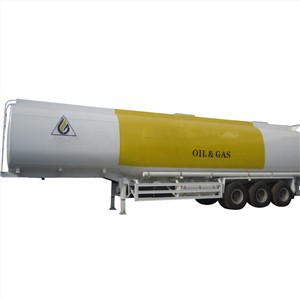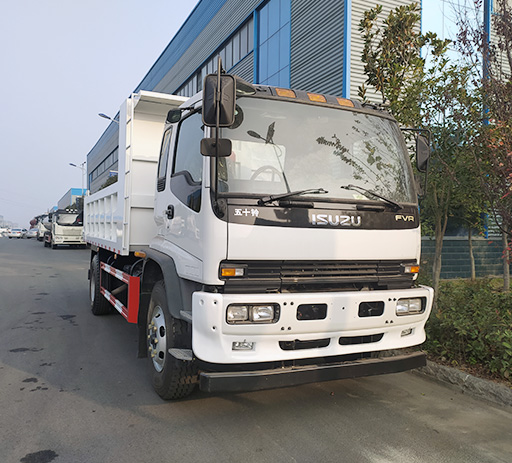Understanding Small Grapple Trucks: Your Complete Guide

Introduction
Small grapple trucks are essential vehicles designed for efficient waste management and material transportation. These trucks come equipped with specialized grapple arms that allow operators to easily lift and move bulky items such as tree limbs, construction debris, and other large objects. As urban areas grow and waste management becomes increasingly important, the role of small grapple trucks in various industries has become more pronounced. This article provides an in-depth look at small grapple trucks, including their features, advantages, applications, and tips for choosing the right one for your needs.
What is a Small Grapple Truck?
A small grapple truck is a compact vehicle equipped with a hydraulic arm and claw mechanism (grapple) for lifting and transporting heavy or awkward items. These trucks typically have a weight capacity that allows them to handle loads ranging from 5 to 15 tons, making them versatile for numerous applications. The design of small grapple trucks blends the functionality of a conventional dump truck with the ability to manipulate large materials through the grapple, thus improving operational efficiency.
Key Features of Small Grapple Trucks
- Grapple Arm: A key component that provides the ability to grasp and lift items securely.
- Hydraulic System: This powers the grapple arm, allowing for smooth and precise movements.
- Cab Design: Designed for operator convenience, with visibility being a key factor during operation.
- Customized Bed Configuration: Some models offer options for customizing the truck bed to suit specific tasks.
Benefits of Using Small Grapple Trucks
1. Improved Efficiency
Small grapple trucks streamline the process of moving bulky materials, allowing companies to complete jobs faster than traditional methods. The ability to load and unload with minimal manual labor saves time and labor costs.
2. Versatility
These trucks can be used in various settings, including construction sites, landscaping, forestry, and waste management. Their flexible design allows them to navigate tight spaces that larger vehicles cannot.
3. Reduced Labor Costs
With their mechanical capabilities, small grapple trucks reduce the need for manual lifting and hauling, which can decrease the overall workforce required on a job site.
4. Safety Enhancements
Sufficient visibility and sophisticated hydraulic controls enable safer operations, while reducing workplace injuries related to heavy lifting.
5. Eco-Friendly Operations
By facilitating faster debris removal and recycling efforts, small grapple trucks contribute to eco-friendly waste management strategies.
Applications of Small Grapple Trucks
1. Waste Management
In waste management, small grapple trucks assist in collecting and transporting refuse, including construction debris and green waste. Their ability to lift heavy loads directly from job sites to disposal facilities maximizes efficiency.
2. Landscaping and Tree Services

Landscapers use small grapple trucks to collect tree limbs, stumps, and other materials during large-scale yard cleanouts. Their compact size allows them to maneuver easily in residential areas, where larger trucks may struggle.
3. Construction Sites
Construction companies utilize small grapple trucks to move materials around job sites quickly. They can load and unload concrete blocks, timber, and other supplies with minimal effort.
4. Municipal Services
Municipalities employ small grapple trucks for tasks such as street cleaning, public park maintenance, and snow removal. The versatility of these trucks makes them ideal for various routine city services.
5. Disaster Recovery
Following natural disasters, small grapple trucks play a vital role in debris removal efforts. Their ability to quickly clear roads and transport hazardous materials assists in recovery operations.
Choosing the Right Small Grapple Truck
1. Determine Your Needs
Before purchasing or renting a small grapple truck, assess your specific needs. Consider the type of materials you’ll be handling, the frequency of use, and the types of jobs you’ll be completing. This assessment helps narrow down the options based on required payload and features.
2. Capacity Considerations

Select a truck that can handle the average weight of the materials you plan to transport. Check the manufacturer’s specifications for maximum load capacity to ensure compliance with safety standards.
3. Maneuverability
If you’ll be working in tight spaces, prioritize a model with a smaller turning radius and overall size. Compact grapple trucks are ideal for urban environments where maneuverability is a concern.
4. Hydraulic System Quality
Examine the hydraulic capabilities of the truck. A more efficient system will provide better lifting power and control. Look for systems designed for durability and longevity.
5. Budget and Financing

Establish a budget and explore financing options. Consider both new and used small grapple trucks. Used trucks can offer cost savings, but ensure they are in good condition and serviced regularly.
Maintenance Tips for Small Grapple Trucks
1. Regular Inspections
Perform routine checks for signs of wear, leaks, and damage. Inspections should focus on the hydraulic system, grapple arm, and tires.
2. Fluid Levels and Changes
Maintain proper fluid levels for hydraulic oil, engine oil, coolants, and other fluids. Regularly change fluids per the manufacturer’s recommendations to prevent mechanical failures.
3. Cleaning the Undercarriage
A clean undercarriage prevents rust and corrosion. Regular washing removes dirt and debris that can compromise vehicle integrity.
4. Operator Training
Invest in proper operator training to maximize efficiency and safety on-site. Well-trained operators are less likely to misuse equipment, leading to fewer repairs and accidents.
Cost of Small Grapple Trucks
The cost of small grapple trucks can vary significantly based on brand, model, features, and condition (new versus used). Here is a general breakdown of expected costs:
| Truck Condition | Average Cost Range |
|---|---|
| New | $50,000 – $100,000 |
| Used | $25,000 – $70,000 |
Additional costs to consider may include maintenance, insurance, and fuel expenses, all of which can impact your overall budget.
Regulatory Considerations
When operating small grapple trucks, it is essential to understand local, state, and federal regulations governing vehicle operations, safety standards, and waste disposal. Failure to comply with regulations can result in costly fines and operational setbacks.
1. Licensing Requirements
Ensure that your drivers have the proper licenses to operate grapple trucks. Check your state’s Department of Motor Vehicles (DMV) for specific licensing guidelines.
2. Safety Guidelines
Adhere to Occupational Safety and Health Administration (OSHA) regulations related to equipment operation and workplace safety. This includes wearing appropriate personal protective equipment (PPE).
Frequently Asked Questions (FAQs)
1. What are the main uses of small grapple trucks?
Small grapple trucks are primarily used for waste management, landscaping, construction, municipal services, and disaster recovery efforts.
2. How do I choose the right small grapple truck for my business?
Assess your specific needs, consider capacity, maneuverability, hydraulic system quality, and set a budget before choosing a small grapple truck.
3. Are small grapple trucks difficult to operate?
While operating small grapple trucks requires training, many modern models are designed with user-friendly controls that make them relatively easy to operate, especially for trained operators.
4. What maintenance is required for small grapple trucks?
Regular inspections, fluid level checks, cleaning, and operator training are essential for the maintenance of small grapple trucks.
5. How much do small grapple trucks cost?
The price of small grapple trucks can range from $25,000 to $100,000, depending on whether they are new or used and based on the brand and features available.
6. What safety measures should be taken when operating small grapple trucks?
Safety measures include ensuring operators wear appropriate PPE, conducting routine safety checks, and adhering to OSHA regulations.
